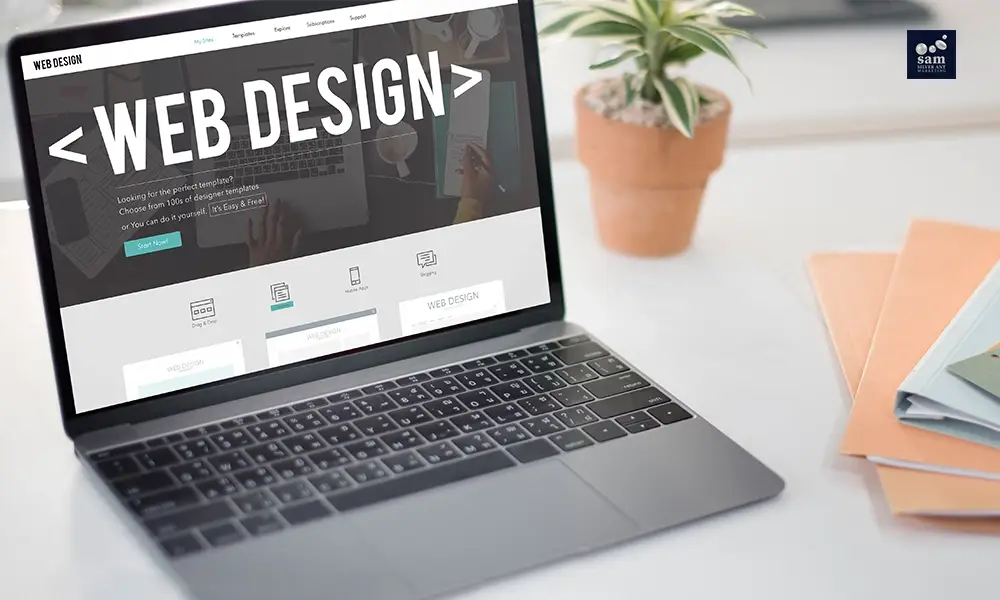A website redesign gives your platform a modern look while aligning it with your business goals, user behavior, and current market trends, making it more relevant, accessible, and impactful.
Marketing Insight:
Studies have shown that users form an opinion about your website in 0.05 seconds – source: Google UX Research. A poorly designed website can repel prospects instantly.
In this article, we will discuss the importance of redesigning your website, key strategies you can implement during the redesign process, how often you should consider a redesign, and the signs that indicate it’s time for one. Whether you plan to update your website through an agency or tackle the redesign yourself, don’t miss this guide—it offers the best tips to support your website redesign journey.
Web Redesign Stats That Speak Volumes
| Metrics | Stats |
|---|---|
| Bounce Rate for Slow-Loading Websites | 32% higher bounce rate if load time exceeds 3 seconds (Google) |
| Consumers Who Judge Business Credibility by Website | 75% of consumers judge a brand’s credibility based on its website design (Stanford) |
| Impact of Website Redesign on Conversion Rates | Up to 200% increase in conversions with optimized UX (Forrester) |
| Impact of Mobile Responsiveness | 61% of users are unlikely to revisit non-mobile-friendly websites (Google Think Insights) |
According to a recent study, around 50% of online users view an updated and redesigned website as a hallmark of a strong brand image. Whether you’ve completed a brand overhaul, launched a new product, or simply redesigned your website, this update can significantly enhance your marketing efforts.
FOMO Insight:
Your competitor may already be investing in web redesign, and if they offer a faster, cleaner, mobile-friendly experience, they’re already stealing your traffic.
If you’re considering a revamp, exploring professional web design and development services can offer a valuable perspective and help you align your site with current user expectations.
Case Study: How a Website Redesign Skyrocketed Conversions
Client
A mid-sized fashion retailer facing an outdated design, low mobile usability, and a high bounce rate.
Solution
Silver Ant Marketing redesigned the site with a mobile-first approach, integrated Shopify for seamless browsing, and optimized loading speed.
Results
Bounce rate dropped by 47%
Mobile conversions increased by 130%
Session duration doubled in 3 months
When Should You Redesign Your Website?
Redesigning a website is one of the most challenging decisions you can make, requiring substantial effort, time, and resources. However, certain signs can indicate when it’s time for a change. If you notice these clues, it may be the perfect moment to consider a redesign. Here are some essential tips to help you make a strategic decision for your website redesign project:
Redesign Signals Checklist:
| Sign | Impact |
|---|---|
| Outdated fonts & visual elements | Reflects poorly on brand professionalism |
| Confusing navigation or structure | Frustrates users and kills conversions |
| Poor mobile responsiveness | Leads to a higher bounce rate and lost SEO opportunities. |
| Slow page speed | Reduces engagement and ranks lower in search |
| No or poor SEO implementation | Your website becomes invisible on search engines |
Responsive Design vs. Separate Mobile Website: Which Is Best for Your Business?
DIY vs. Agency Redesign
Comparison Table
| Factor | DIY | Agency |
|---|---|---|
| Time & Resources | Time-consuming, flexible | Faster, professional expertise |
| Cost | Lower initial cost | Higher cost but higher ROI |
| Skills Required | HTML, CSS, UX, SEO, design | Team of experts covers all skill areas |
| Support & Maintenance | Self-managed | Ongoing support usually included |
| Scalability | Limited by your knowledge | Future-proofing with latest technologies and CMS options |
If you’re not an expert in SEO or UI/UX design, you’re better off choosing a website redesign agency for reliable results.
How to Redesign a Website in 5 Steps
Redesigning a website involves five key steps that will guide you through the process. First, audit your current website to assess what’s working and what’s not from a user’s perspective. Next, set clear goals—whether it’s improving conversions, load speed, branding, or SEO—to define the purpose of the redesign. It’s important to study your competitors, analyze what’s trending in your industry, and gather inspiration from their successful strategies. After that, plan your content structure by creating a sitemap that aligns with SEO and the customer journey. Finally, decide whether to use a DIY platform like Wix or Webflow or work with a professional agency to bring your vision to life.
- 1 Audit your current website: Note what’s working and what’s not from the user’s perspective.
- 2 Set clear goals: Define your purpose—improve conversions, load speed, branding, SEO, etc.
- 3 Study your competitors: Analyze what’s trending in your industry and draw inspiration.
- 4 Plan your content structure: Create a sitemap that aligns with SEO and customer journey.
- 5 Choose your method: Decide between a DIY platform (like Wix or Webflow) or hiring a professional agency.
Common Questions About Website Redesign
Typically every 2-3 years, but it depends on technology changes, branding shifts, and user behavior trends.
If done right, it improves SEO. Ensure proper 301 redirects, maintain URL structure, and optimize on-page SEO.
It varies from $1,000 to $20,000+ depending on complexity, integrations, and agency involvement.
DIY may take months; with an agency, average timeline is 6-10 weeks.
Yes. But it’s a great opportunity to revise outdated content and add SEO-rich copy.
Don’t Let Your Website Fall Behind – Redesign Before It’s Too Late!
Most customers today decide within seconds whether they trust your brand, and your website is the first filter. If your website feels clunky, slow, or outdated, chances are your leads are already heading to a sleeker competitor.
Want a site that converts and captivates? Talk to us today at Silver Ant Marketing and get a free consultation on your website redesign!





